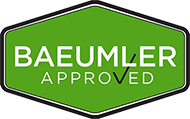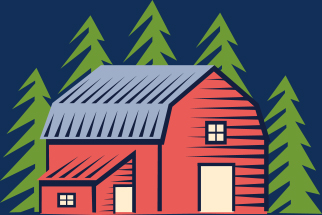Finding the Ideal Location for Your Shed
Posted By Cathy Scholes On 17-04-2019
You may have heard the rather hilarious (or sad, depending on how you look at it) story about the DOT that constructed a bridge in the middle of the desert, with no roads leading from it or to it. By the time they realized their grievous error it was too late. They rushed out in order to remove any evidence of their egregious mishap only to discover that someone had already found it, and was enjoying some pleasant fishing at the spot. The good news is that deciding where to place your shed is far less expensive, and much easier than determining where to spend tax money on bridge construction. Below, are a few tips that may help you find the best location for your shed, without breaking the bank.
Accessibility is Key
First, you should determine what your shed will actually be used for. For instance, if you intend for your shed to be used mainly as a garden shed then it would make logistical sense to place it near your home’s garden. Of course, if you do decide to erect a garden shed it should be erected in an area that doesn’t block several hours of valuable sunlight. Or, perhaps your shed will be used to store winter supplies. If this is the case, and you plan on storing your snowblower in it, then that last thing you want to do is have to walk through the snow, across the backyard, and then create a path all the way back to your home via the snow blower; all before you have even begun actually clearing your driveway and your sidewalk. Hence, location is key, and determining what your shed will be primarily used for beforehand will save you headaches and frustration in the future.
Image is Everything
For some shed owners, the beauty of their backyard will supersede the threat of possible snow during the winter. Some homeowners will want their shed to blend in perfectly with their surroundings so that it doesn’t stick out and become an eyesore. However, others may prefer to have their sheds stand out in order to be a part of the outdoor decor. Of course, both are perfectly acceptable, but determining which type of homeowner you are and how you want your shed to be perceived by others (quite literally) may help make your shed placement decision a little easier.
Measure the Setback
Here, setback refers to the distance between your property line and the actual structure. If you want to avoid issues with either the building inspector or your next-door neighbour then you need to make sure that there is sufficient space between your neighbour’s yard and your brand new shed. If in doubt ask your local city or county offices or check with your HOA. Also, when summer comes along you want to make sure that you can use your lawnmower properly. That is, there should be enough room available between the fence and the shed for you to navigate your lawnmower around; especially if you decide to upgrade to a more powerful “MegaMower” to get through your chores a lot quicker.
Longevity Should be Considered
In order for your shed to last as long as possible, it should be placed in an area that is not wet all the time. It should also not be situated on the receiving end of your neighborhood’s local watershed either. Furthermore, the roof and sides of your new shed can become damaged by low hanging tree branches when the wind picks up. The last thing you want is for your shed to become damaged due to scraping, and wear on the roof as well as the paint on the shed will quickly become an issue if you don’t find a safe location to place the shed. Moreover, if you own a sprinkler system then you should remember that a sprinkler system, which can work wonders on your grass with regular waterings, will not have the same beneficial effect on your shed; so try and erect it in an area where the sprinklers can’t get to it constantly.
A Level Ground is Paramount
While It is theoretically possible to erect a structure or building on slopes, using very creative steps, the best case scenario would be to it on a very level ground. By doing so, things become much easier, and you will also save more money the more level the ground is. However, please note that flat doesn’t necessarily mean level. For instance, it is possible for the ground to be flat, without any bumps or stumps, but still be on a slope. Just some food for thought before you decide on the ideal location for your shed.
Utilities, Utilities, Utilities
For the wellbeing and safety of everyone involved, a building should never be placed on top of utilities or power lines that have been buried. The good news is you can get your utilities marked, gratis, by simply dialing 811 or calling your local utility company. Don’t take the risk of not checking, as it may lead to serious property damage or injuries if you are not careful.
We hope we have provided you with enough information to help you determine the absolute best location to erect your shed. Planning ahead of time will help you avoid any issues in the long run so that you can enjoy your shed for decades to come.
In the Backyard
If you are in need of a premium quality backyard shed then look no further. In the Backyard has over 40 years of combined experience in outdoor and indoor renovations, custom woodworking, and customized backyard sheds. We are also a family operated and owned enterprise that is committed to going above and beyond the call of duty to provide our customers with beautiful, durable, and cost-effective backyard sheds. For a free, no obligation quote and consultation please give us a call at 1-844-212-1284 or visit our website.
 0 Comment
0 Comment

